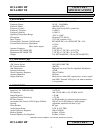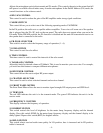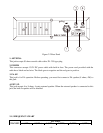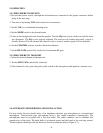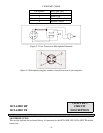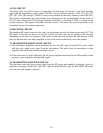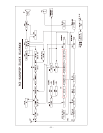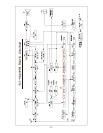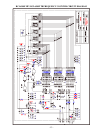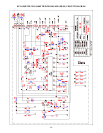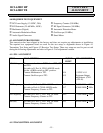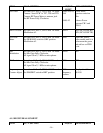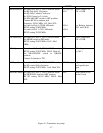- 10 -
3.1 PLL CIRCUIT
The Phase Lock Loop (PLL) circuit is responsible for developing the receiver’s first local oscillator
signal and the transmitter’s exciter signal. The PLL circuit consists primarily of IC2, IC3, IC4, IC5
Q25, Q27, Q28, Q29 and Q61. The PLL circuit is programmed by the rotary channel switch GPS-0501.
The switch communicates the correct binary data information to the programmable divider inside of
IC3. IC3 then controls the VCO (Voltage Controlled Oscillator), consisting of VCO to oscillate on the
correct frequency. This signal is fed either into the receiver’s first mixer (for receive operation) or the
transmitter’s mixer (for transmit operation).
3.2 RECEIVER CIRCUIT
The incoming RF signal comes into the radio via the antenna and into the front-end pre-amp, Q17. The
RF signal is fed into the mixer circuit Q18 & Q19 and then into the IF section of the receiver
(depending on the mode of operation). The signals is then detected by either the AM detector or FM
detector and then fed to the audio amplifier section of the receiver and finally out to the speaker.
3.3 TRANSMITTER MODULATION CIRCUIT
(i) The transmitter modulation circuit modulates the low-level RF signal from the PLL exciter circuit
with the user’s audio voice signal from the microphone. The audio from the microphone is then
amplified and fed into the transmit amplifier circuit.
(ii) If the transceiver is in the AM mode, the AF power amplifier modulates the last RF amplifier which
produces a true amplitude modulated RF signal.
3.4 TRANSMITTER AMPLIFIER CIRCUIT
The transmitter takes the basic exciter signal from the TX mixer and amplifies it through a series of
amplifiers consisting of Q50, Q51, Q49, Q47, Q48 and EPA010010A (only for RCI-6300F TB) where
it is sent out to the antenna connector.



